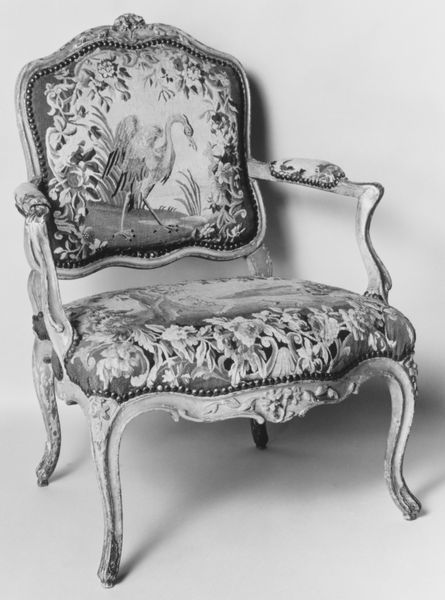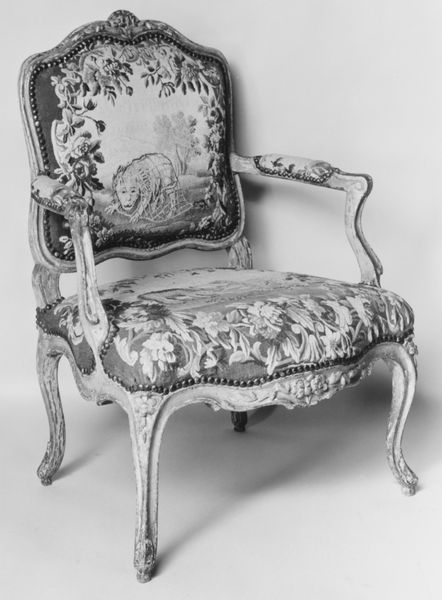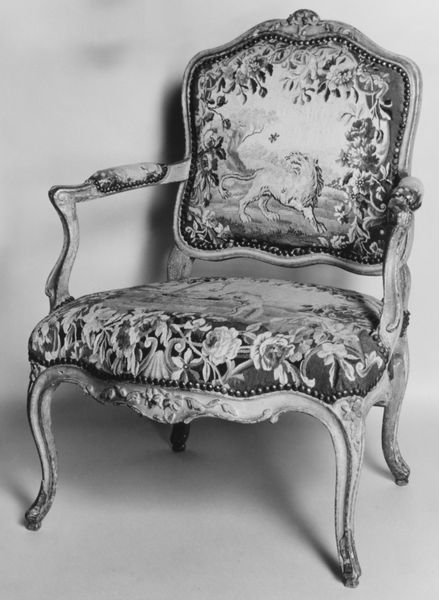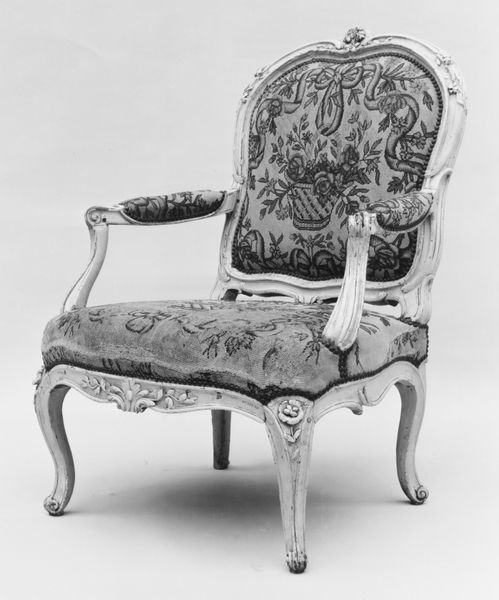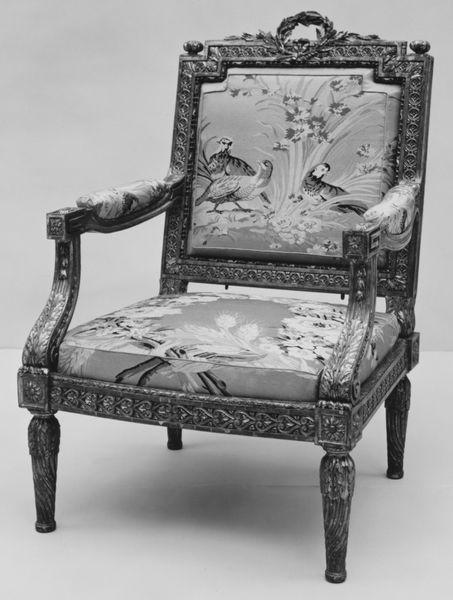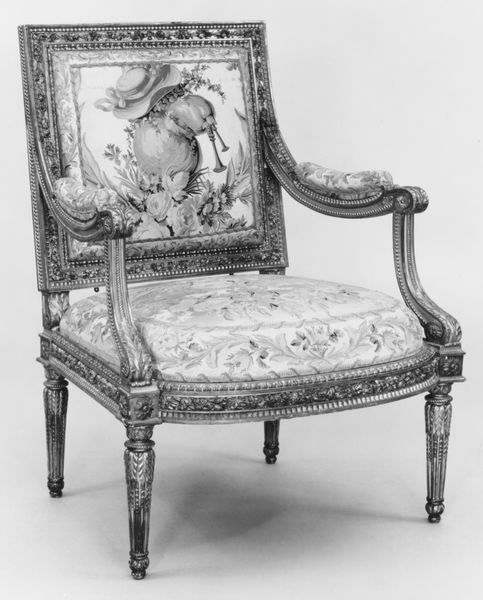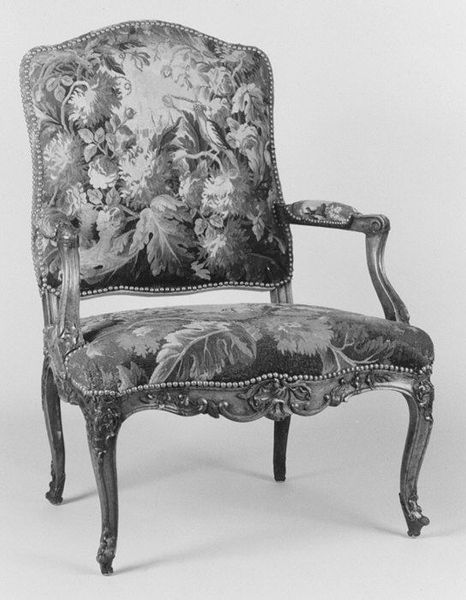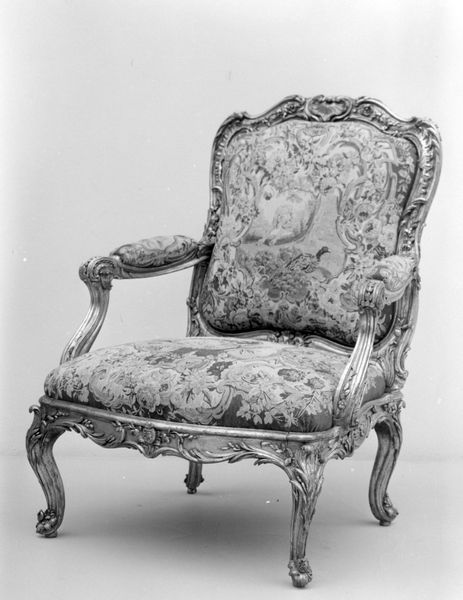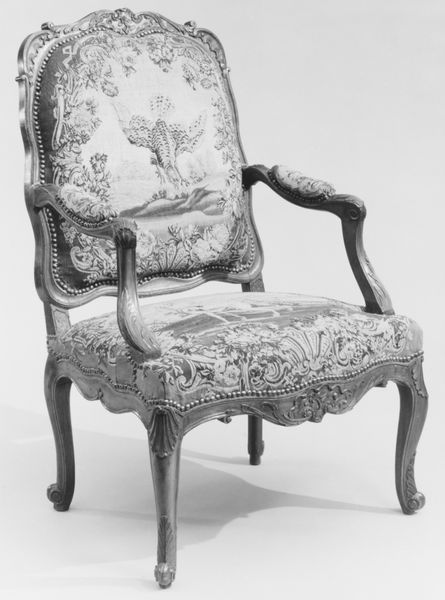
carving, weaving, textile, sculpture, wood
#
portrait
#
carving
#
sculpture
#
weaving
#
furniture
#
landscape
#
textile
#
sculpture
#
wood
#
decorative-art
#
rococo
Dimensions: Overall: 37 7/8 × 29 1/4 × 22 in. (96.2 × 74.3 × 55.9 cm)
Copyright: Public Domain
Editor: This is an armchair, part of a set of nine, dating back to between 1730 and 1765. It is currently held at the Metropolitan Museum of Art, and it’s an object crafted with wood carving and textile weaving. The Rococo style is unmistakable. What strikes me is how the scenes depicted are of nature and serenity, while the actual object is so clearly one of luxury and status. What do you see in this piece? Curator: I'm drawn to the production of this object – a material study, if you will. The confluence of carving and weaving, high art and craft, points to the complex social fabric of the time. Consider the labor involved in each step. How many artisans contributed, and what were their social standings? The wood, the textiles...where did these raw materials originate, and what does that say about trade and consumption patterns in the 18th century? Editor: That’s fascinating! So, beyond just appreciating the finished aesthetic, we should also be considering the journey each material took, and the human effort behind every curve and stitch? Curator: Precisely. This armchair isn't just a seat; it's a node in a vast network of extraction, production, and consumption. By examining the means of production, we gain a deeper understanding of the economic and social realities that shaped its creation. The landscapes on the textile might speak to the owners view, but for me it invites questioning. How does something become precious, and for whom? How did the landscape become just a decoration, separate from life, on such an object? Editor: It makes me see how art isn't just about beauty but a complex layering of social and economic stories. It certainly prompts you to ask the tough questions about what something means. Curator: Agreed. By scrutinizing the materiality of objects like this armchair, we start to dismantle the traditional hierarchies within art history itself.
Comments
No comments
Be the first to comment and join the conversation on the ultimate creative platform.

